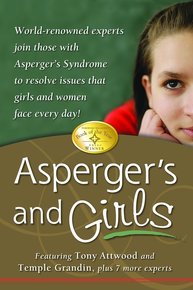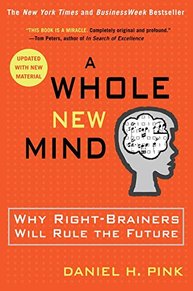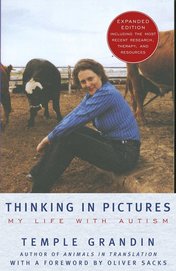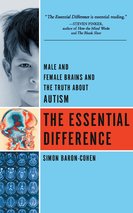Sex Education for Kids and Teens with Autism and Asperger's: A Conversation with Sarah Attwood1/28/2009
Puberty and sex can be tough for any parents to discuss with their children, but it's important. And for kids, preteens, and teenagers with autism and Asperger's, sex education is vital. Kids on the autism spectrum may be less socially sophisticated than peers, but their physical development will progress regardless if they, or their parents, are ready to handle the changes. For your child's safety and happiness, parents need to put aside any reservations and start discussing sex!
Today, I'm talking with Sarah Attwood, the author of Making Sense of Sex: A Forthright Guide to Puberty, Sex and Relationships for People with Asperger's Syndrome. (Jessica Kingsley Publishers, 2008) Ms. Attwood has been a sexuality educator in Australia for fifteen years, and has worked extensively with parents and their preteen and teenage children. Patricia Robinson: Sarah, your book is different than other sex education books because it's specifically written to adolescents with Asperger's Syndrome. How is the information in your book tailored specifically to those on the autistic spectrum? What do you think are the special concerns and issues of teens with autism and Asperger's? Sarah Attwood:You're quite right, Patricia, that young people on the autism spectrum are going to go through the changes of puberty in exactly the same way as all other people, and for this reason they need exactly the same information as everyone else. However, the nature of autism and Asperger's syndrome means that there are some specific issues which usually aren't addressed in regular puberty books, and that's why Jessica Kingsley asked me to write Making Sense of Sex. Lots of regular puberty books use contemporary language - 'teen talk', if you like - and while this can be fun and amusing, it isn't always to everybody's taste, so I decided that it was more important to treat the subject with respect, and use a straightforward, factual tone (hopefully not too deadly serious, however!). I took into consideration that most people with ASD enjoy facts and appreciate being able to apply logic, so I have always explained 'why' as well as 'what'. An example of this is when I discuss hygiene (an issue for a lot of adolescents, whether or not they have ASD!). I explain EXACTLY what causes body odour, which bits of the body are affected most specifically, the reasons why it is important to wash regularly (health as well as social reasons), and exactly HOW to wash. I don't assume knowledge or make generalisations that can be misinterpreted. Because of the love of knowledge that most people with ASD have, I have provided plenty of facts. For example, the usual rule in sexuality education is to avoid giving young people any sort of hang-ups by giving facts and figures regarding penis size; it's standard practice to say something like 'Whatever size your penis is, is exactly right for you.' This isn't clear enough or reassuring enough for young people on the autism spectrum, however. So I have given specific measurements of both flaccid and erect penises (of fully grown men), and plenty of other reassuring facts about penises, so that there is no room for confusion or doubt. I have also been careful throughout the book to use correct terminology, with a view to modelling this so that adolescents know how to talk about sex in a respectful way, and can make themselves understood. There is a whole chapter dedicated to the subject of sexual language (including slang), as young people with ASD so often miss out on what is current because they aren't included in teenage groups. There are some social issues surrounding puberty that can be veritable minefields for young people with ASD, and which are often not included in any detail in regular puberty books - namely, the rules that surround sexual behaviour (especially public vs. private behaviour, body parts, places and language); friendships; coping with teasing, bullying and peer pressure; and handling strong emotions (a particularly important issue for people on the autism spectrum). So I have included whole chapters on these subjects, with some specific guidelines, laid out in dot point format for easy reference. All young people need someone they can turn to when they have questions or anxieties, and research shows that most youngsters would love to be able to talk to their parents about sexual issues. Many don't, however, often due to their parents' discomfort with the topic, instead turning to their friends for information (or misinformation). Adolescents on the autism spectrum may not be able to turn to a group of friends, so it is absolutely vital that parents and carers fulfil the role of mentor. There is no place for squeamishness or embarrassment - parents and carers MUST educate themselves and be there for their child. Throughout the book I make reference to the young person's social mentor, and give many pointers as to the role this person may take in terms of providing reassurance and guidance, giving accurate information, and helping with friendship skills and emotion management. At the end of the book, I provide quite an extensive list of resources, both for parents and for the young people themselves. Some of these are specific to people on the autism spectrum and some are mainstream but still very relevant. The book is illustrated with diagrams and cartoons to provide both detailed information (anatomical drawings etc.) and fun ways of viewing some of the points made in the different chapters. I hope these illustrations make the book more accessible and reader-friendly. Patricia Robinson: Thanks for your comments!  Although the book Asperger’s and Girls (2006, Future Horizons) sounds like it’s aimed at children on the autistic spectrum, adult women with autism and Asperger’s will also find this book useful. The book is compiled of chapters on different topics, each written by different authors, such as Tony Attwood and Temple Grandin, as well as lesser known individuals. As always, Tony Attwood presents interesting information, such as the fact that, although girls are less likely than boys to actually have Asperger’s (male to female about 4:1) they are even less likely be assessed for it (10:1). Couple that fact with the general under-diagnosis of adults on the spectrum, and it’s clear that there are many women with Asperger’s who may or may not have a diagnosis, and many who don’t get the support they need. The more adults themed chapters of this book present some interesting viewpoints on relationships, marriage, motherhood, and the different challenges women on the autistic spectrum face. These chapters question the conventional ideas that everyone "should" get married or have a relationship, and the idea that all people are happier in relationships. Temple Grandin makes a brief but eloquent argument that, for many individuals on the autism spectrum, the goal of life is not emotional relatedness. She explains that for her meaningful work is what gives her life meaning and that she’s happiest when doing projects. She nicely differentiates social skills from emotional relatedness. In my other blog, for parents of kids with special needs, Social Skills for Kids, I've reviewed the chapter on social issues and bullying. Although it's aimed at a high school crowd, the material is so clearly and logically presented, that it may be of value to adults with Asperger's and autism as well. We've all seen the bullies and cliques don't disappear after high school! This book is a good introduction to a topic that is just starting to be explored.  I just finished listening to an interview with Daniel Pink about his book, New York Times bestseller A Whole New Mind: Why Right-Brainers Will Rule the Future. This book looks at our changing world economy and how that impacts our careers. I work on career issues with many adults with Asperger’s and autism, individuals typically considered to have strengths as left brained thinkers, so the premise of this book was fascinating. Pink was interviewed by Oprah on her Soul Series, but don’t let that scare you if you’re not an Oprah and spirituality fan. The interview is about more than spirituality, including business and economics as well. Pink uses the left brain, right brain idea as a metaphor to compare systematic, logical thinking (a “left brain” function) and more creative, big picture ideas (a “right brain” function.). Pink, a self described left-brain thinker, theorizes that our changing world means that we’re moving from the Information Age to the Conceptual Age. Those individuals who excel at more right brained functions, which Pink terms the senses of design, story, symphony, empathy, play and meaning, (and conversation, which Pink adds in the interview) will succeed professionally and personally. Much of this change is brought about by the growing abilities to outsource or automate any career that’s highly systematic. Pink uses examples such as accounting and law, while I thought instantly of my former career as a Semiconductor Packaging Engineer. (Try to find one of those employed in the US!) For those in the autism field, Pink’s book may bring to mind the theories of Simon Baron-Cohen in The Essential Difference: Male and Female Brains and the Truth About Autism. Baron-Cohen refers to the male, systemizing brain and the female, empathizing brain, and the idea that autism and Asperger’s may correlate to an extremely high level of systemizing, coupled with a low level of empathizing.
Does Pink’s theory warn of looming disaster for professionals with Asperger’s and autism? To my thinking, only on the surface. It is an alert to all of us, on the spectrum or not, to keep growing and learning. We all need to build on our innate strengths, while paying attention to and strengthening those areas where we don’t excel. Professional success, as always, depends on the ability to adapt to change. Also, the Asperger’s/autism strengths in thinking outside the box are probably a key to success in this new environment. Listen to the interview and see what you think.  I’m rereading an old favorite, Temple Grandin’s Thinking in Pictures. This book is so rich and deep, and the author is so insightful, that the book offers something new on every reading. For parents of children on the autistic spectrum and for adults who have, or suspect they have, an autism or Asperger’s diagnosis, this book is one of the first I recommend. Early in the book, Grandin discusses how she uses doorways and windows as an experiential and visual metaphor for dealing with change and emotion. Grandin explains how the image of a doorway helped her manage changes she was going to experience, such as a graduation. She moved beyond visualizing a doorway and repeatedly walked through an actual door. In a similar manner, Grandin used an experience of being stuck between two windows to understand relationships with people, with the window symbolizing disconnected feelings and the fragile glass symbolic of relationships. Grandin goes on the discuss how other autistic individuals use symbols which may not be as logical and understandable for neurotypicals to understand. I think the important message here is that the symbols individuals choose, whatever they are, can be so useful for them. I’ve worked with clients who make tremendous progress in dealing with difficult experiences and emotions after they physically create a container for their feelings, or build an object that expresses emotion. Many of my clients love to graph out their emotions, sometimes getting quite elaborate mathematically. As a therapist, I try to initiate this symbolic process for my clients, follow their lead and then trust their innate wisdom and ability to heal. It can be a challenge to sit back and support when I don’t know quite what’s going on. What can parents do? For starters, trust your instincts. Then, provide the richest, most varied environment you can, and give your child a wealth of experiences. If they seem to be using symbols and metaphors, can you encourage that and make the experience fuller? Finally, to some degree, you’re going to have to let go and trust in the wisdom of your child. Are you looking for a deeper understanding of your child with autism or Asperger’s? One of the best sources of information about the world of children on the spectrum can come from adults with the same diagnosis. That’s one of the reasons that I enjoy following blogs written by adults on the autism spectrum. With all the media attention that focuses on children with autism, adults on the spectrum may be overlooked. As parents of autistic children, these individuals can be a wonderful resource.
You can't necessarily expect to find bloggers with a diagnosis that exactly matches your child's. Because the official diagnostic criteria have changed over the years, and because many adults were never officially diagnosed or were misdiagnosed, adult diagnoses may not match those of your children precisely. Diagnosis in children can offer many benefits. In adults, an official diagnosis may not offer as many advantages, so many adults choose not to undertake official testing. Often you’ll find more general terms like “autistic blogger” rather than a formal diagnosis. How do you find autistic bloggers? One of my favorite sources is the Autism Hub. There, blogs written by adults with autism or Asperger’s are clearly identified. Alltop lists selected blogs by category, including autism. Various autism and Asperger's related blogs are linked on Asperger Webring as well as listed on The Autistic Place. What can you expect to find on these blogs? Every viewpoint you can imagine, including some that I’m sure you’ll disagree with. (Those are probably the most important ones for you to read!) After all, your kids will grow up and disagree with you on some things as well! It's Monday, the holidays are over, and, at least here in Northern California, the weather is dreary and drizzly. A little depressing. Even my dog, Olive, doesn't seem to have much energy. Maybe you're feeling the same way.
Many individuals on the autism spectrum, and those with Asperger's, can be prone to depression, both the temporary feeling of sadness and the DSM diagnosis of Major Depressive Disorder. Of course, I can't treat mental health issues or diagnose over the internet, but I can direct you to the well written Mayo Clinic website. They discuss Depression, nutrition, Seasonal Affective Disorder (SAD), light box therapy, the benefits of exercise, psychotherapy, and even alternative therapies. My favorites are the coping and support sections under the topics for both SAD and Major Depression. These are some excellent tips for improving your moods, and taking steps to feel better. The site also has good info on when to see a doctor. If you're feeling a little down after the holiday rush, why not check out this website? |
Patricia Robinson MFT
I'm a licensed therapist in Danville, California and a coach for Asperger's and ADHD nationwide. I work with individuals of all ages who have special needs, like Autism Spectrum Disorders, ADD, ADHD, and the family members and partners of special needs individuals. Archives
February 2015
Categories
All
|


 RSS Feed
RSS Feed